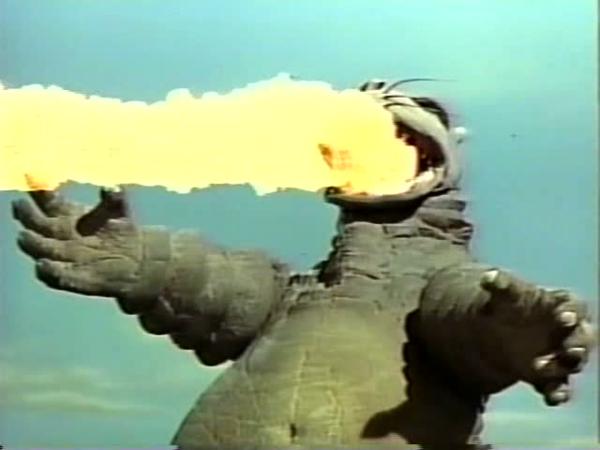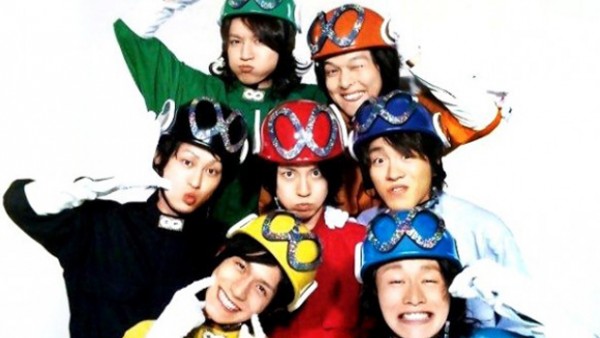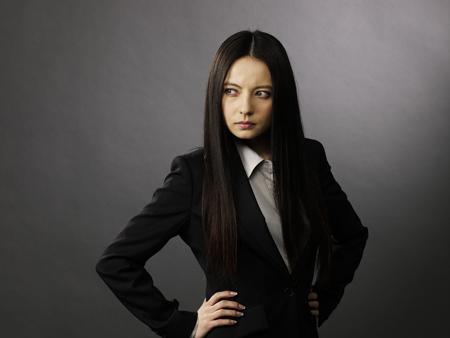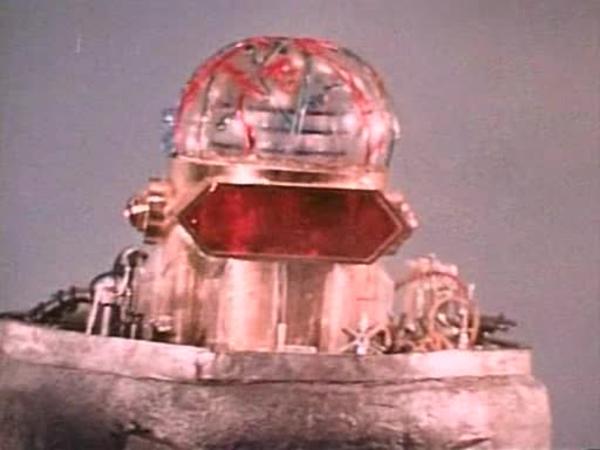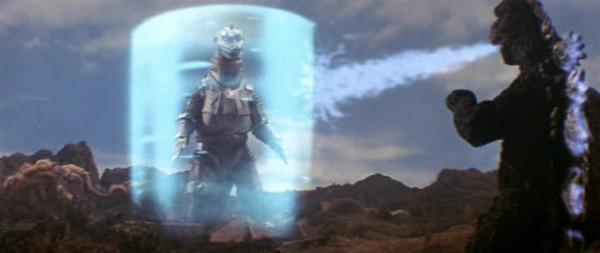Prince of Space
aka 遊星王子 aka Yusei Oji
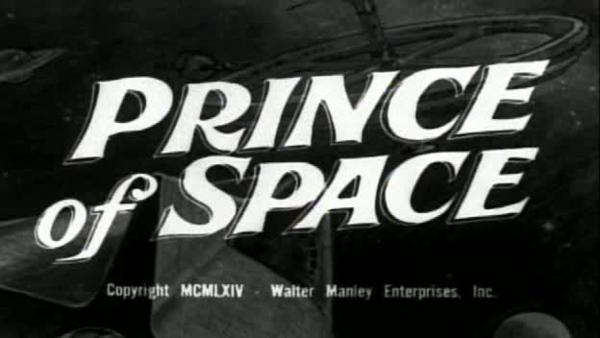
1959![]()
Written by Masaru Igami
Screenplay by Shin Morita
Directed by Eijiro Wakabayashi
 |
|
Look, our planet has had it up to here with these damn Kenny kids running around!
|
Prince of Space! One of the greatest films of all time, so suck it, Citizen Kane! (EDIT: After I wrote the original draft, a certain list decided we should be telling Vertigo to suck it instead! Vertigo can legitimately suck it because it IS worse than Prince of Space! Vertigo sucks.) Prince of Space is a battle between good and evil, fought in a Saturday morning format. The heroic Prince of Space will defend Earth and everyone on it from the evil Phantom of Krankor because that’s just what heroes do. The battle of wills if fought in 1950s Japan, amid Japanese children, rocket science, and rebuilding from the war.
 |
|
Those Flaming Hot Cheetos sure are!
|
Even Prince of Space is helping Japan recover and become a modern nation once again. As his human persona Wally, he not only helped Dr. Macken develop a magical rocket fuel formula that will put Japan in the space race (THE race for industrial nations in the 1950s!) but he also adopts orphaned children and is teaching them how to become productive citizens of Japan. There is a definite class thing spread among the film, as Wally’s kids Mickey and Kimmy have the working class theme going on, while Dr. Macken’s kid Johnny is constantly dressed up in a suit and tie. Despite the differences, the kids are best of friends. There is no animosity between the classes, everyone is working together to pitch in to help Japan, and to defend Japan when danger threatens in the form of Phantom of Krankor. Prince of Space/Wally is an outsider, but moves efficiently between the classes, both as the lab assistant and as the bootblack.
 |
|
The various tv networks just copy each other’s shows again and again…
|
Dedicated Prince of Space fans know that he is really Yusei Oji aka Planet Prince, and that Prince of Space is actually two films combined together! Not only that, but there was a Planet Prince tv series before the films, airing from 1958-1959 for 49 episodes on NTV. Planet Prince’s costume was very similar to his inspiration, Starman (aka Super Giant). In this series, Planet Prince fought a variety of enemies, including robots and spacemen and masked goons. Many of the Planet Prince episodes have been released on DVD in Japan, though they used to carry an import price that could buy you a small village. Planet Prince appeared in comics and in other assorted promotional material. Toei also made two movies for Planet Prince: Planet Prince (遊星王子 aka Yusei Oji) and Planet Prince – The Terrifying Spaceship (遊星王子 – 恐怖の宇宙船 aka Yusei Oji – Kyofu no Uchusen). The two were based on one of the Planet Prince story arcs from the first set of 13 episodes. The original TV series costumes were updated for the silver stream, and actor Toshio Mimura was replaced with younger actor Tatsuo Umemiya.
The Prince of Space flicks were made for kids, primarily boys, which is evident by the multiple children in the film. Prince of Space in his human form Wally even adopted two orphan children, young enough that their parents might have died due to post-war Japan problems. The fact that the two boys are the focus while Kimmy is relegated to the background also shows the target audience was boys. Wally’s herocism is made greater because of the traditional view of orphans in Japan (though this could have changed a bit due to lots of orphans being created due to World War 2, I really don’t know…) From what I can tell of the original series, Prince didn’t have kids, but hung around with a kid and a female character who were often kidnapped by the bad guy of the week. A bit more about Planet Prince will be discussed in the Yusei Oji reviews, along with a breakdown of differences between those two films and the Prince of Space film.
Like Planet Prince/Prince of Space, Ambassador Phantom of Krankor wears an entirely different costume. If the plotline of the episodes follow the plot of the films, I cannot tell you, as all I can find are these bad pictures of the original Ambassador Phantom of Krankor:
Even though the villain’s name is technically Ambassador Dictator Phantom of Krankor, I’ll occasionally call him Krankor, as that’s the name everyone knows him as. If you don’t like it, tough cookies!
Phantom of Krankor’s reasoning for attacking Japan at first is to get the rocket fuel formula developed by Dr. Macken. A greater power attacking a neighbor in order to get fuel? Is Phantom of Krankor a surrogate of Imperial Japan during World War 2? Even odder, the second Phantom attack is just to conquer the planet, with a supposed demonstration of superior technology, even a line about Phantom going to destroy a city. By then, had Phantom become a surrogate of the US during World War 2? Even going so far as planning to threaten Earth into surrender by destroying a city, like how the US nuked to Japanese cities? More strange, the two Phantom of Krankor plans are from two different Prince of Space/Planet Prince films. As we shall see with the first Yusei Oji film, these might even be two seperate Phantoms! Prince of Space defeating both Japan and the US shows he is more powerful than everything. But because he’s Prince of Space, he uses his power responsibly. He rarely tries to kill the invaders, hoping they will see the error of their ways and be scared off. Prince of Space had Spiderman’s great power with great responsibility thing figured out before Peter Parker was a twinkle in his dad’s eye.
 |
|
I have to laugh, because I’ve outsmarted even myself. My enemy, my foe, is an animal. In order to conquer the animal, I have to learn to think like an animal.
|
Prince of Space is pure pulp cinema, Prince of Space easily defeats the great threat to the entire planet. There is no sense of danger at all, Prince of Space is at no time in trouble at the slightest by Phantom’s weapons. The only real threat is to the surrounding civilians and kidnapped scientists, and even they manage to escape harm time and time again. Phantom even lets children go, despite the fact he should have recognized his only leverage over Prince of Space was to take massive hostages. Phantom’s own arrogance is expounded to impossible degrees to serve the plot.
 |
|
On planet Krankor, we create our own TV reception!
|
Heroes coming in and beating the crap out of bad guys easily is a common pulp serial theme, the only time danger entered was when it was needed for cliffhangers. The “To be continued…” problem was always solved incredibly easily in the beginning segments of next week’s adventure, making you wonder why it was a cliffhanger in the first place! Of course, these stories weren’t written for the drama, they were written for the fight scenes, and the pulp movies were packed with battles. Usually long fist fights, though Prince of Space goes one better and just has long laser gun fights. Most of which are one-sided, either Prince of Space being invincible, or hapless humans being instantly disintegrated by menacing Chicken Men. Prince of Space’s repetitiveness is different from the repetitiveness in almost every contemporary pulp film. The Starman features contain long fist fighting sequences, and even Invasion of the Neptune Men features a long long space fight over Tokyo that goes on far too long. Prince of Space’s action only gets boring in that we know Prince is invincible. The suspense is whether Prince will kill the villains or let them live again. They do try to vary the action, which I give the film props for. The locations are always different, and the battles vary with whatever weapons are being used against Prince to no effect.
 |
|
I’m the boss and I get the big gun!
|
Speaking of old serials, Prince of Space contains a lot of other old school scifi tropes that became serial staples. The rocket ships are build like actual rockets (though stylized) and Prince rides in a hotrod/UFO combo. The advanced technology of the Krankor men uses cranks and dials, there is no modern computer interface, because there weren’t any computer interfaces to modernize! Why would these computers that had to fit into entire buildings be on spaceships?
 |
|
People take me seriously????
|
There is a lot of things that different between the American dubbed version and the two original Japanese films, but that will be covered more thoroughly in the separate reviews for those two films. Rest assured that Beaver Falls is not the original name for the Japanese town. It’s Beaver Hills! Walter Manley produced the English version through Bellucci Productions, which specialized in English dubbing of foreign films. Bellucci also did dubbing for Ghidrah the Three Headed Monster, Battle in Outer Space, and Liane Jungle Goddess.
Director Eijiro Wakabayashi helmed a string of children’s films, including a lot of made for television specials. He had prior work on doing tokusatsu television show to film adaptations with 1958’s Moonlight Mask – The Claw of Satan. Like the Planet Prince serials, the Moonlight Mask (aka Gekko Kamen) flicks were bigger budgeted adaptations of television series episodes.
 |
|
No.
|

|
 |
|
Okay, let’s try to shoot him another couple hundred times…
|








